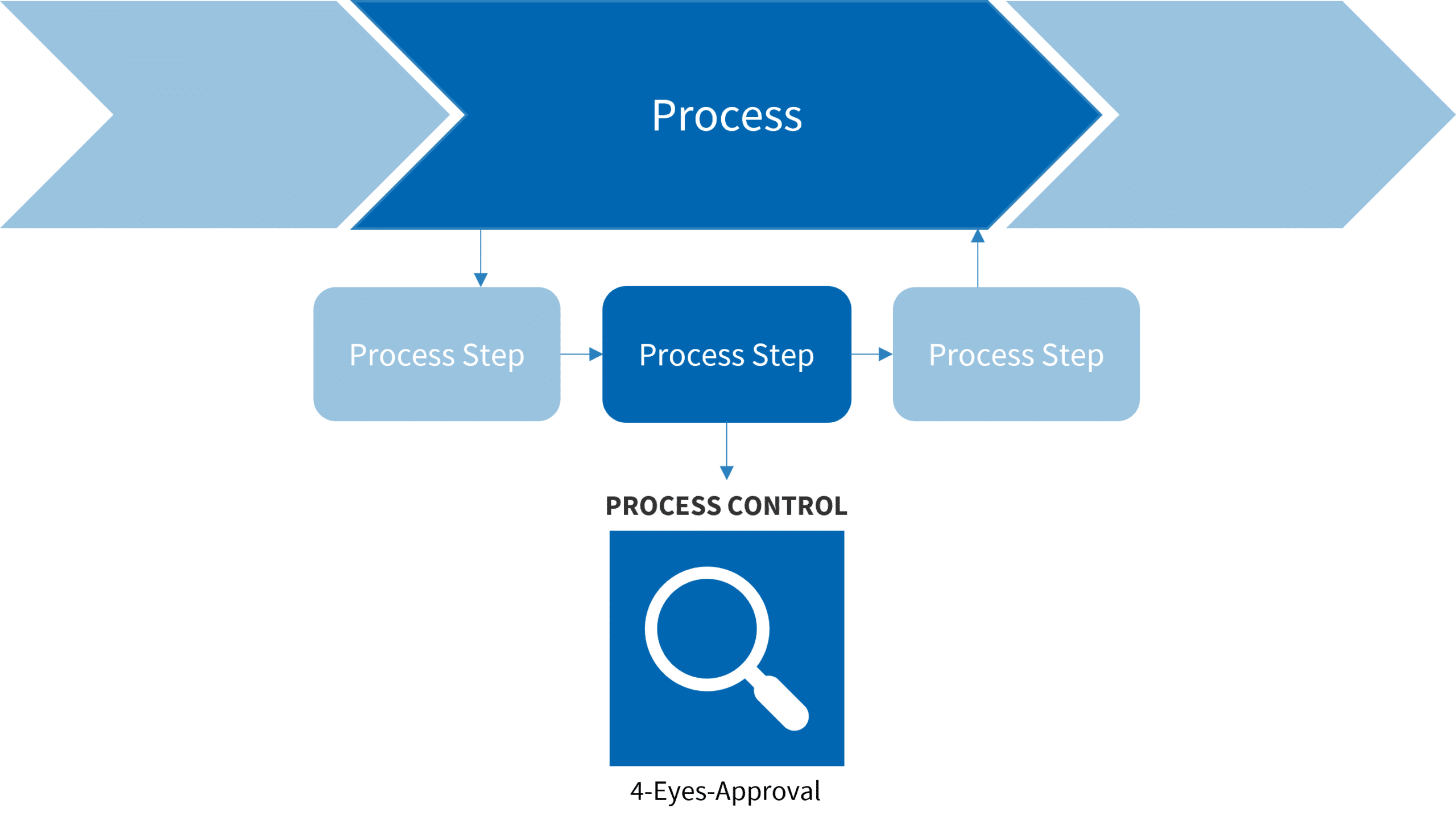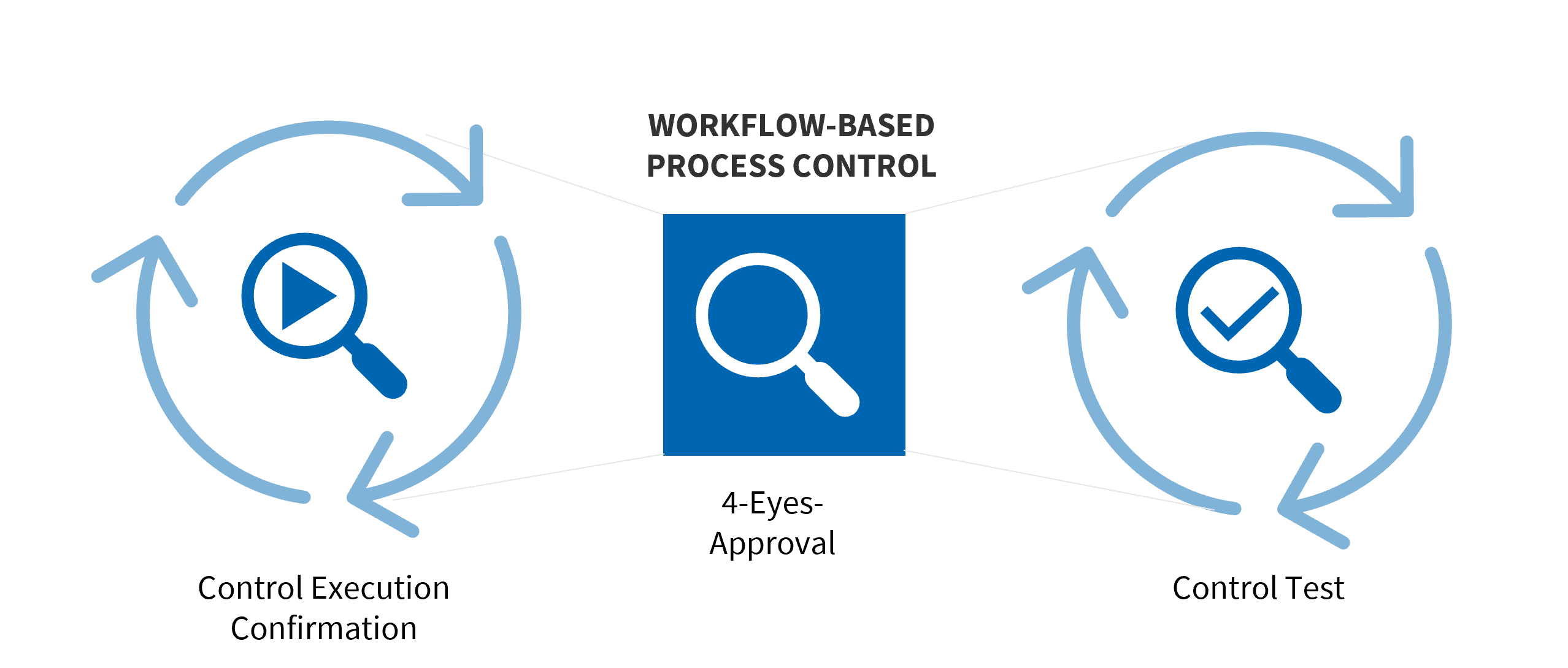Found this helpful? Share it with peers.
Introduction
Are you familiar with this: As the person responsible for a process, your core task is to ensure that your processes run smoothly. To ensure that this succeeds, you have assigned controls to certain process steps. These are also carefully documented in your system. However, at some point (or at least by now at the latest) you have certainly come across the following thought: “How can I be sure that my control is really being carried out? Is it effective at all?” If these thoughts sound familiar to you, then you have come to the right place! We have the appropriate solution ready for you!
Why are quality process controls relevant?
As is generally known, the central task of a company is to fulfil certain corporate goals. For this purpose, the identification and implementation of business processes is necessary. Processes are therefore an elementary component of organisations and contribute significantly to the company’s success. The prerequisite for this is a consistently high quality standard and smooth process flow. Only in this way can time and costs be saved and potentially occurring negative effects due to process deviations be avoided.
If processes come to a standstill, related tasks cannot be completed, superfluous communication channels are created and enquiries are necessary. In the worst case, your customers are affected. The functionality as well as the quality of processes is therefore a top priority in every company.
The process view in detail
Each process consists of several interrelated process steps (also: activities or tasks), the execution of which is the task of different persons. A process always pursues a specific process goal. As a rule, the so-called process owner (also: process owner, process manager) is responsible for the fulfilment of this process goal.
Process owners are therefore in charge of many tasks – starting with the planning and introduction of a process, the management of the employees responsible for the process steps as well as the successful implementation and monitoring of the processes. Finally, the focus is on continuous process improvement.
Quality process controls ensure optimal process performance
So that the person responsible for the process can guarantee a smooth process flow and a permanently high quality standard, controls are used – the so-called process controls. They are an integral part of a process and are usually carried out every time the process is run. The main task is to monitor and ensure the individual process steps.
A frequently used operational control in the process of submitting an offer would be, for example, the 4-eyes approval. This ensures that no relevant errors are included in the process step of creating the offer and that the process as a whole is characterised by its quality.

Image 1: Operational controls to ensure process steps are carried out
Unfortunately, it is often standard practice in companies that process controls are only mapped for documentation purposes within processes or their process steps. Consequently, the question of meaningfulness arises, because you as the person responsible for the process can only answer two essential questions with difficulty:
- “Have my process controls been carried out?”
- “Is the process control effective at all?”
It would therefore be beneficial to provide each process owner with a proactive tool. Fortunately, this tool does exist. It is a workflow-based process control. In concrete terms, this means that a process control is defined in more detail – by attaching instructions, execution declarations or referencing. Based on this, control execution confirmations and control tests are deposited.

Image 2: The Workflow-based process control
Summary and next steps
By obtaining control execution confirmations, process owners can see at a glance that the process control has been carried out properly. The use of additional control tests is used to monitor operational controls. They are, so to speak, “controls of controls”. They provide information on whether a control fulfils its purpose and is therefore effective. Often, several controls are combined in one control test.
Thus, workflow-based process controls are a useful tool to ensure the functionality as well as the quality of a process. Process owners benefit from them because they contribute directly to process optimisation and are consequently also relevant to the overall success of the company.
If you are interested in more details on the use of control execution confirmations and control tests, take a look at our webinar on ” Control, anchor and automate controls”. In this webinar we show how these two tools can be implemented directly into a process to support you in process management.






